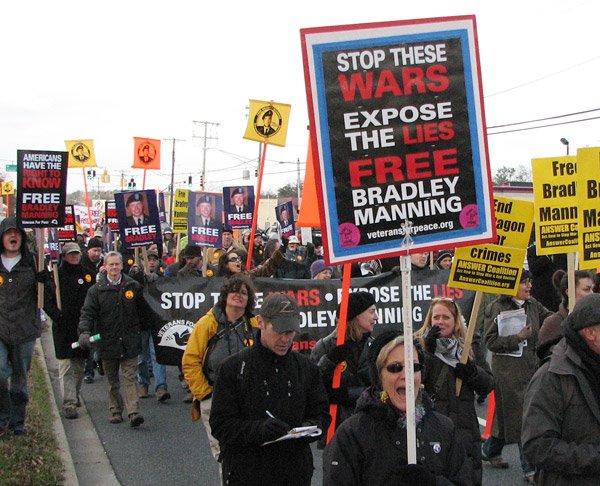
Image by Marcus.rosentrater and is in the public domain.
If you want to believe the Washington Post, with its increasingly neocon voice, Ana Belen Montes, currently locked up at the U.S. Marines Air Station at Fort Worth, is a dangerous spy, guilty of “brazen acts of treason.”
On the other hand, maybe she is a whistle-blower, someone “who reveals wrongdoing within an organization to the public or to those in positions of authority.” Maybe she should be grouped with other better known whistle blowers vilified in the corporate media—e.g., Daniel Ellsberg, Joe Darby, Chelsea Manning, and Edward Snowden, all of whom exposed various forms of illegal state violence.
Here is what Sean Joseph Clancy, member of the International Committee for the Freedom of the Cuban Five (five Cubans recently pardoned by President Obama), tells us about Ana.
Ana Belen Montes, a Puerto Rican U.S citizen, with degrees in international relations, was recruited by the Defense Intelligence Agency (DIA) in 1985 and posted to the Bolling Air Base in Washington, where she worked as an intelligence investigation specialist. In 1992, she was transferred to the Pentagon, promoted to the position of Senior Analyst, and had access to almost all data on Cuba collected by the intelligence community. She spent time in a “fake” post with the U.S. diplomatic mission in Havana to study the Cuban military and was sent back there in 1998 to “monitor Pope John Paul II’s visit.”
In September 2001, while working in her office in the DIA compound in Washington D.C., Ana was arrested by F.B.I. agents, and charged with espionage on behalf of Cuba. At her trial, she declared, “there is an Italian proverb that perhaps best describes what I believe: ‘The whole world is just one country. In this world country, the principle of loving others as oneself is an essential guide to harmonious relations between neighboring states.’ This principle implies understanding and tolerance of the different ways that others act. It establishes that we treat other nations the way we would like to be treated – with consideration and respect. In my opinion, we have unfortunately never applied this to Cuba.”
Ana went on to say, “In doing what has brought me before the court, I put my conscience above obeying the law. I believe our government’s policy on Cuba to be cruel and unjust and profoundly hostile. I felt morally obliged to help the island defend itself against our efforts to impose upon them our values and our political system….Why do we not let them decide how to manage their internal affairs, just as the U.S. has done for more than 200 years?…. We can see today more than ever that intolerance and hate – be it on the part of individuals or Governments – results only in suffering and grief.”
You decide. Spy? Whistleblower?
Learn more about Sean Joseph Clancy, author of this post, at http://en.escambray.cu/2013/the-irishman-who-dreams-with-the-cuban-five/

